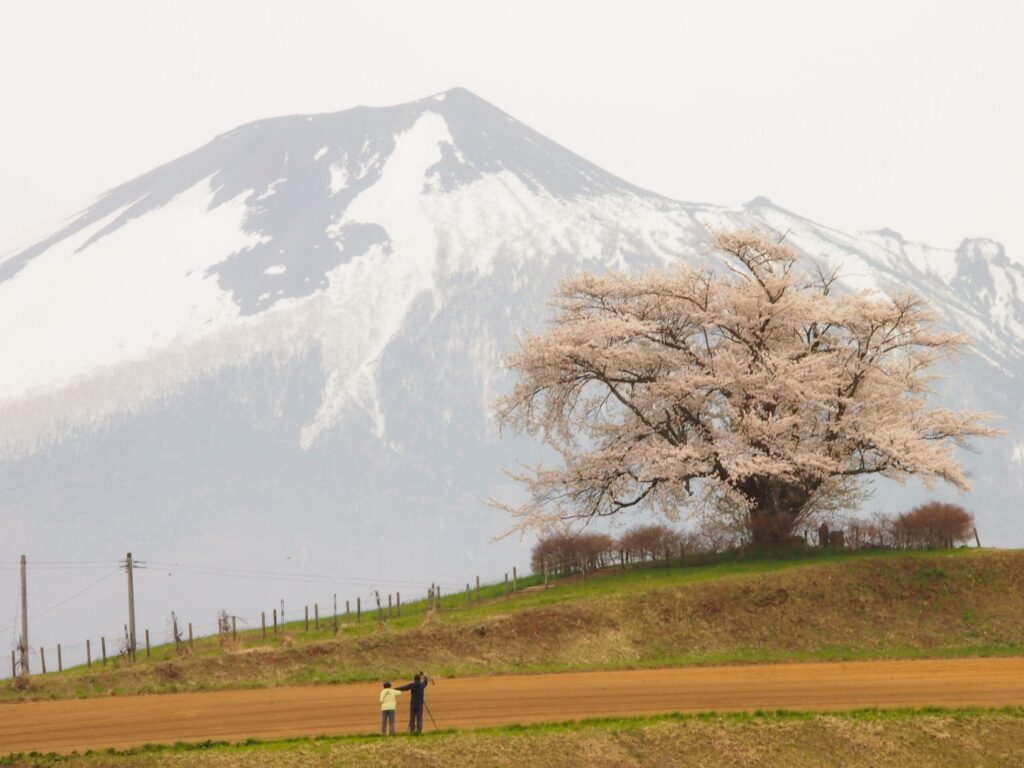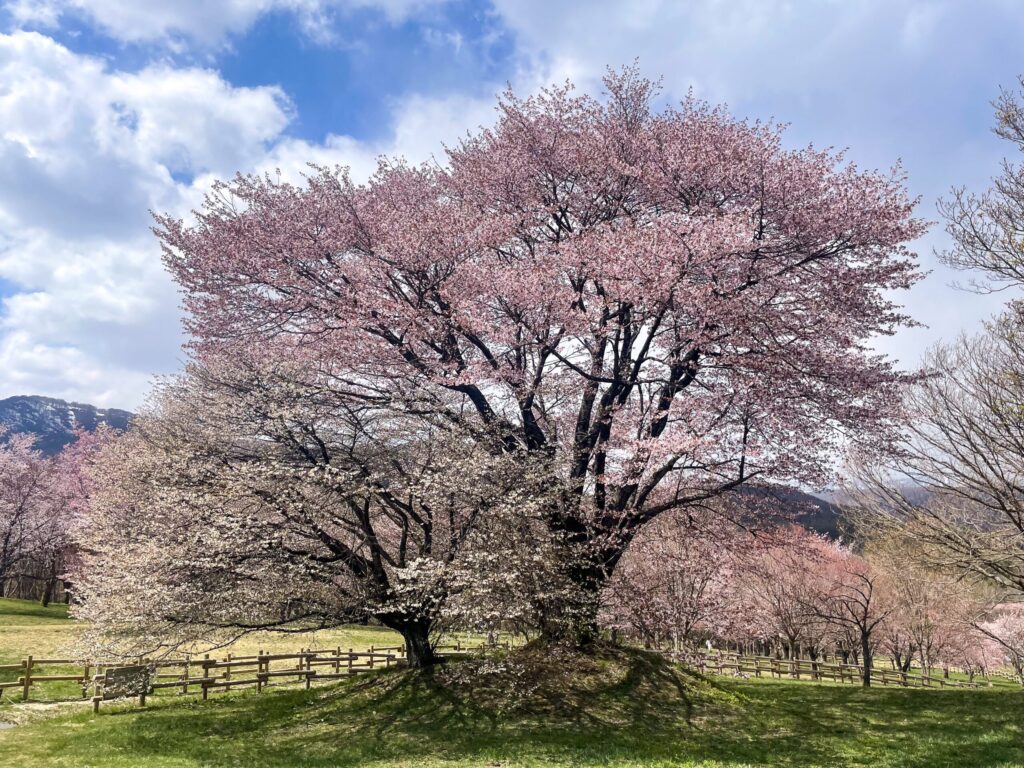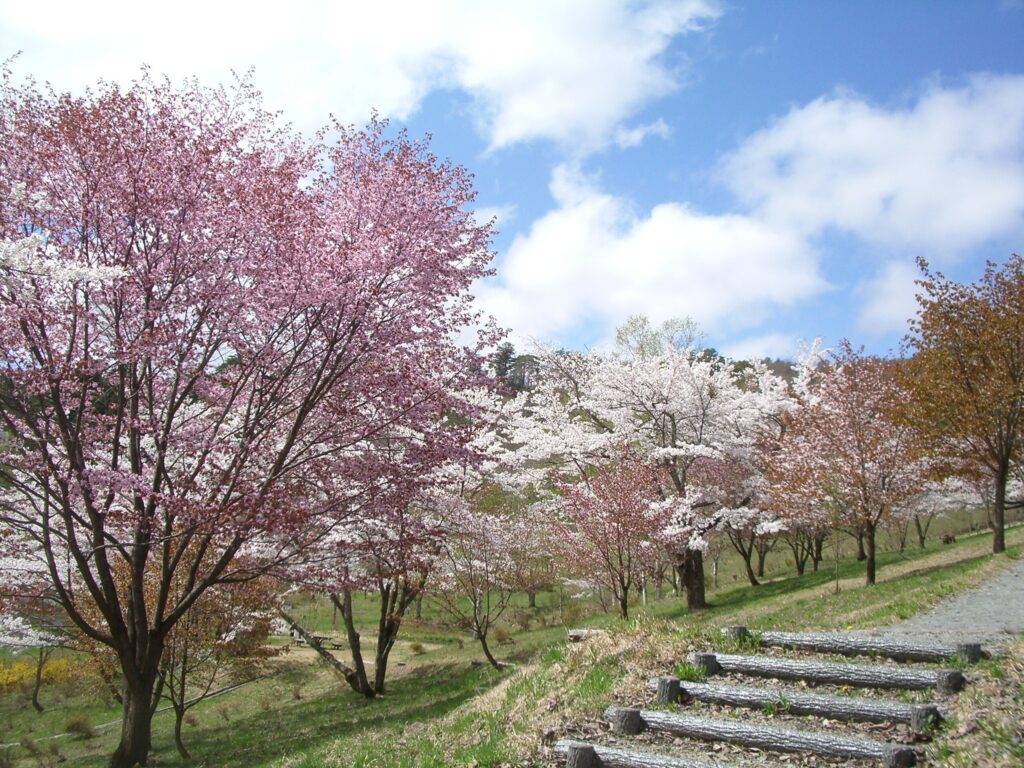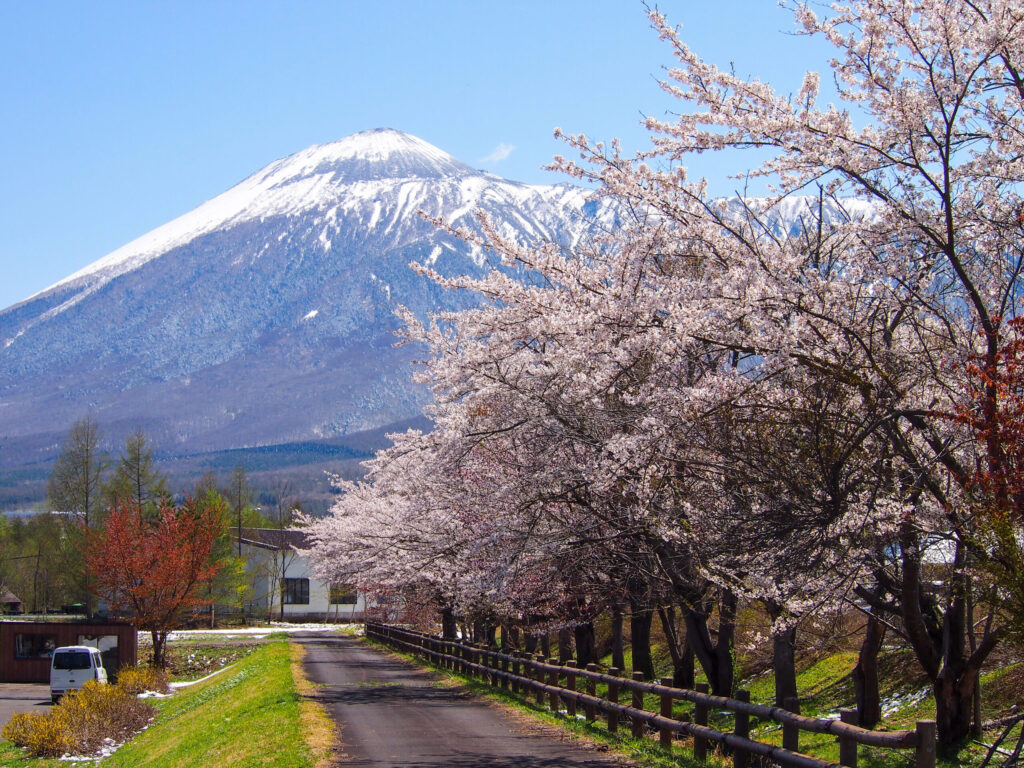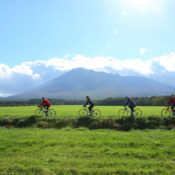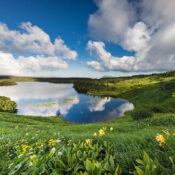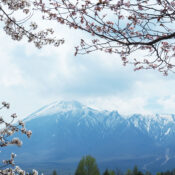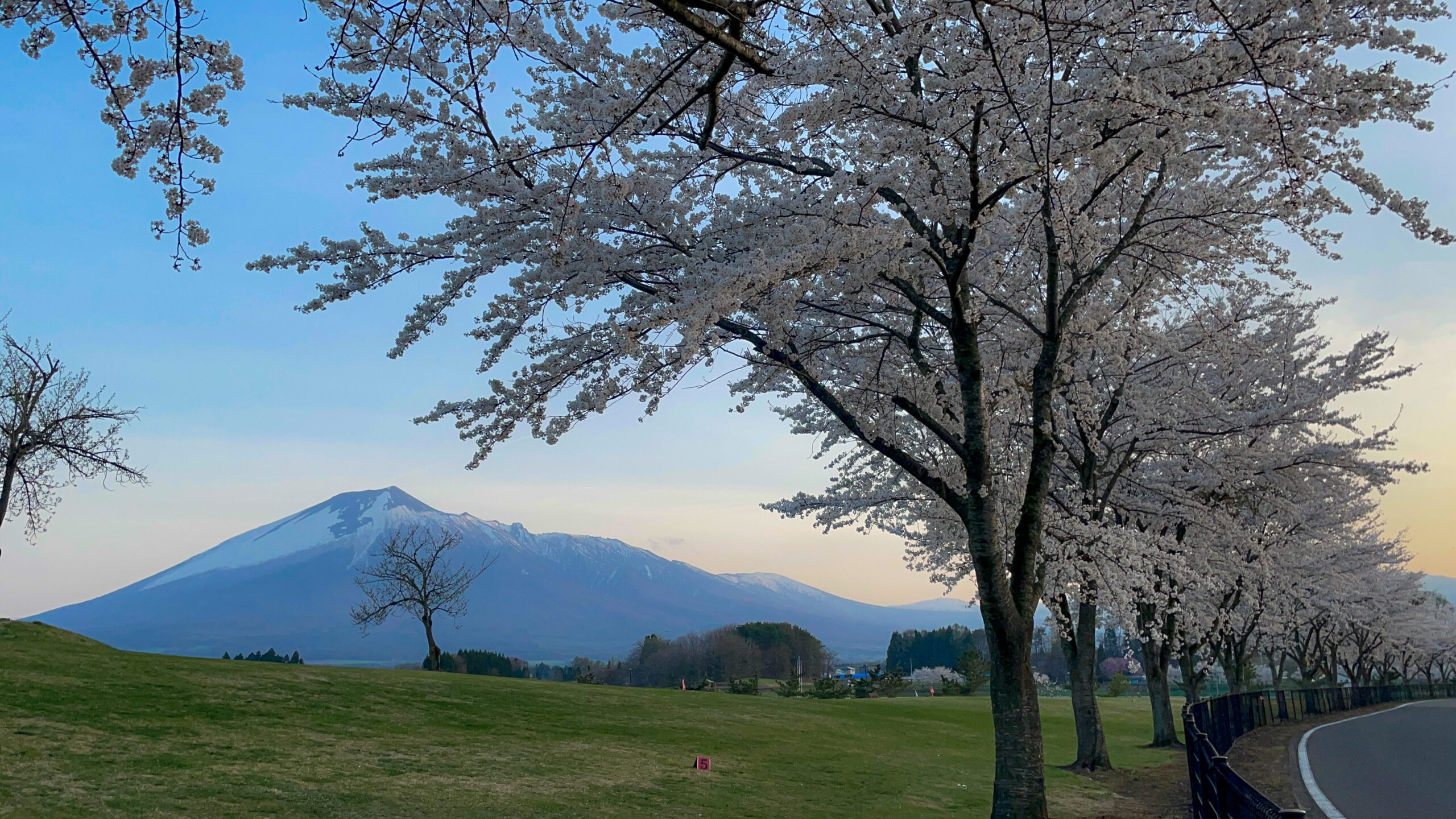
While snow lingers on the mountain tops, the warmer weather brings with it impressive blooms and the iconic Hachimantai Dragon Eye phenomenon atop Kagami-numa Pond. No matter when you visit in spring, there’s something different to see. Here’s your insider guide to getting even more from your spring holiday to Hachimantai.
Still snow!
For more information on access and pricing, slope conditions, accommodation and dining options, please see the resort's official website.

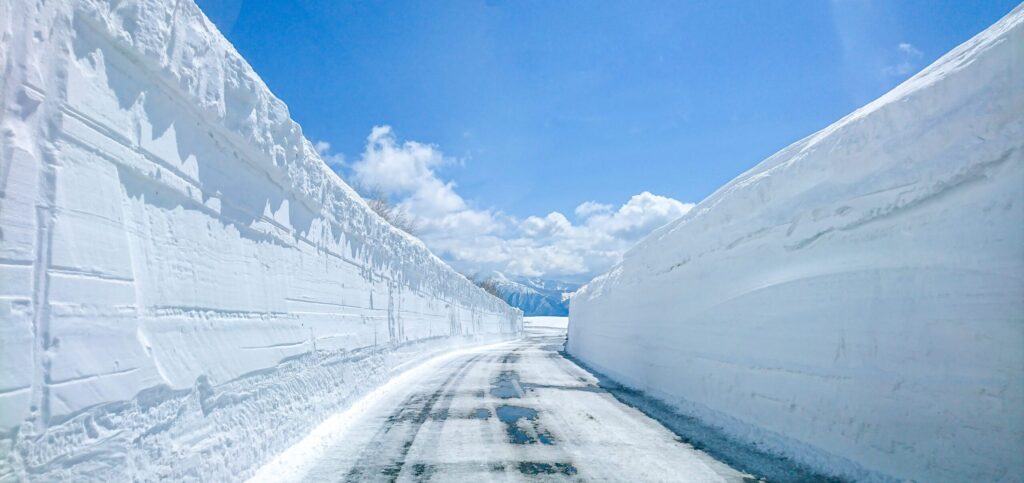
Cherry blossoms minus the crowds
- Row of Cherry Trees along Prefectural Highway 233 (Google Maps): Mid-April
- Cherry trees flank either side of this road that gently climbs towards Yakehashiri Lava Flow and Mt. Iwate.
- Solitary Cherry Tree of Inai (Google Maps): Mid- to late April
- This Yoshino cherry tree sits atop a small hill with Mt. Iwate looming large in the background.
- Please note that there are no parking lots in this area and visitors should be careful not to obstruct the flow of traffic.
- Iwate Prefectural Citizens’ Forest (Google Maps): Late April to early May
- This 360 hectare forest park runs aside Matsukawa Gorge. There are about 300 Sargent’s cherry trees as well as other varieties planted here concentrated in Everyone’s Square.
- The annual Hachimantai Sakura Festival will be held here from Friday 3rd to Sunday 5th May 2024.
- Hachimantai Sakura Park (Google Maps): Late April to early May
- As the name suggests, this park adjacent to Matsuo-Hachimantai Visitor Center has plenty of cherry blossoms. With a great view of Mt. Iwate, this is a good place to lay out a tarp and enjoy a hanami-style picnic (a.k.a. cherry blossom viewing party).
- Sakuramatsu Park (Google Maps): Early May
- Local legend says that cherry blossoms once bloomed magically from the pine trees here. While the origins of that story are unknown, there are actual cherry trees blooming throughout this park that also encompasses Sakuramatsu Shrine and Fudo Falls.
- The annual Fudo Falls Festival will be held here on Friday 3rd May 2024.
- Solitary Cherry Tree of Uwabo (Google Maps): Early to mid-May
- Sitting alone in a paddock this Korean mountain cherry has Mt. Iwate as its backdrop.
- Please note that the cherry tree is located on private property and entry is prohibited. As there are no parking lots in this area, visitors should be careful not to obstruct the flow of traffic.
Please note that bloom periods are dependent on weather conditions and may change. You can view up-to-date information on blossom conditions > here.
The famous Hachimantai Dragon Eye
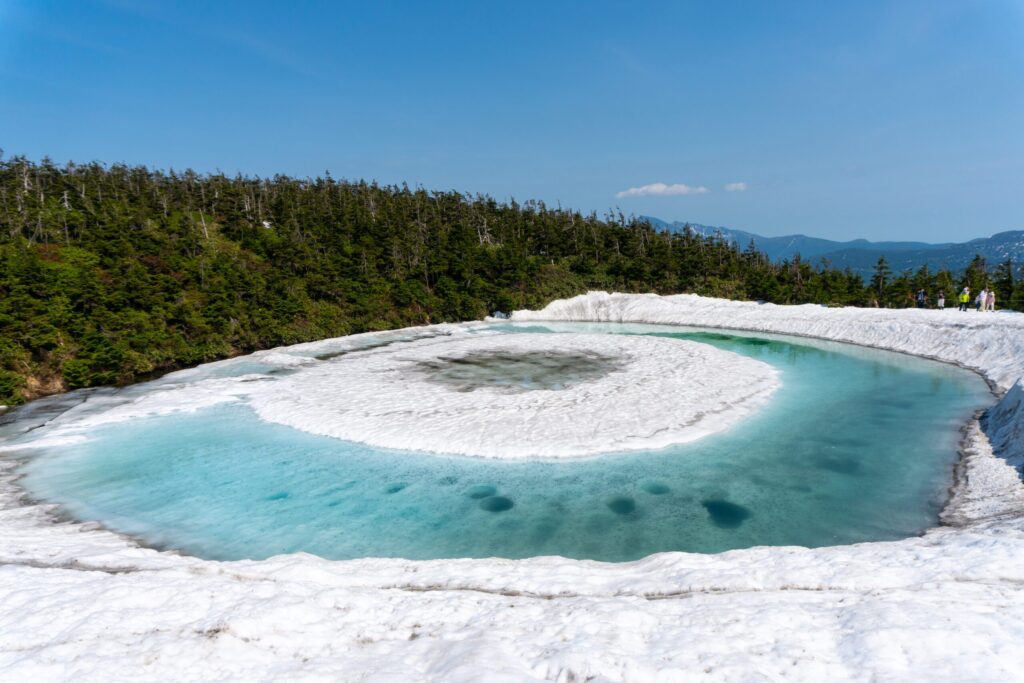
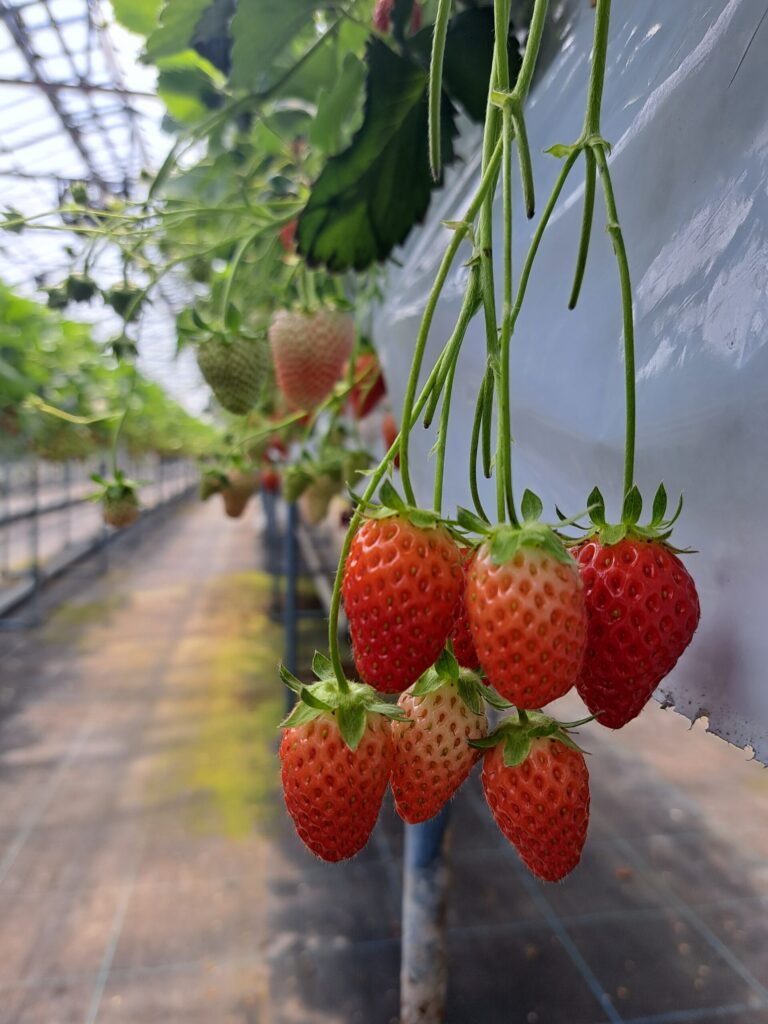
All-you-can-eat fresh strawberries
Spring flowers turn into spring fruits and at local strawberry and flower farm, Saikaen (Google Maps) you can pick your own. They offer 50-minute ‘all you can pick and eat’ sessions, allowing you to taste the sweetness of ripe, farm-fresh strawberries. In their greenhouses, you can try five different varieties of strawberries including some that are not sold in stores.
- Open daily 10:00 a.m.-3:00 p.m. until late June
- (bookings not required, however, it is worth calling ahead: 0195-76-4458, as they may close early depending on availability)
- Adult: ¥2,200 (incl. tax); Child: ¥1,800; Infant: ¥1,100
Finally: the
- Several cultural events are held throughout spring to welcome the warmer weather – follow @trip8jp onFacebookandInstagramto stay up to date with everything that’s happening.
- Known as Golden Week, a string of closely spaced public holidays falling at the end of April and start of May is peak season for domestic travel. Book accommodation and transport in advance if travelling during this period.
- Winter tires are required into spring, especially on mountain roads. If renting a car, check that it is suitably equipped for your intended route.
All Categories
Recent Posts
Hachimantai Plus: Summer
Hachimantai Plus Kids: Green season guide
Hachimantai Plus: Spring
Tags.


